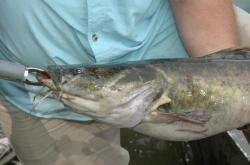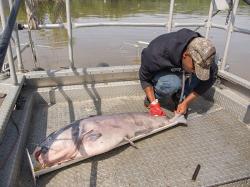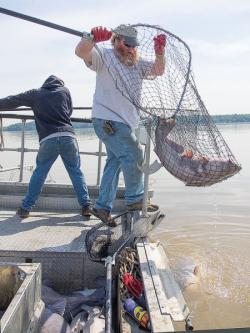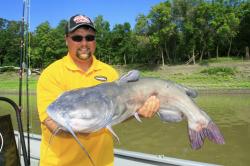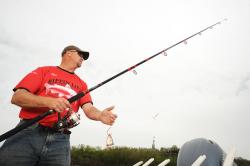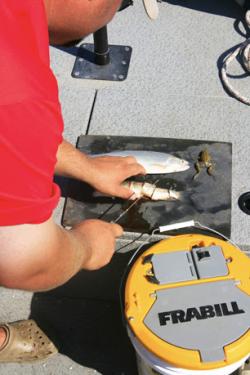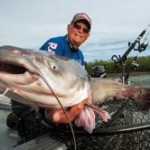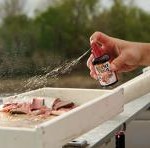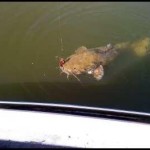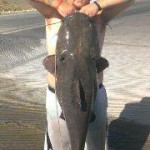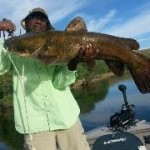SUMMER PLANS: VISIT A GEORGIA PUBLIC FISHING AREA FOR FAMILY FUN
from Georgia DNR
SOCIAL CIRCLE, Ga. (July 6, 2023) – When making family plans for the summer, be sure to include time to visit one or more of Georgia’s 11 Public Fishing Areas (PFA). PFAs are managed for fishing by the Georgia Department of Natural Resources’ Wildlife Resources Division (WRD), and most areas offer additional experiences to entertain the whole family.
“Georgia PFAs are tailor made for a great day for the whole family. Anglers can enjoy casting out on waters that are managed for fishing,” says Scott Robinson, WRD Fisheries Management Chief. “But beyond fishing, these locations provide something for everyone, including activities like hiking, bird watching, picnicking and camping.”
Waters on PFAs vary from lakes several hundred acres in size to ponds less than one acre with some designated as kids-only fishing ponds. Anglers can fish from a boat, along the shoreline, or from piers or docks at most locations.
All PFAs have concrete boat ramps, picnic tables, various nature and wildlife observation trails, fish cleaning stations and restroom facilities. Some PFAs offer camping opportunities (from primitive camping to RV) for those wishing to stay overnight on the area. All PFAs are open seven days a week, and except for Rocky Mountain PFA, also allow night fishing year-round.
Make plans to visit one (or more) of the following PFAs today:
- Rocky Mountain PFA (Floyd County): Includes two lakes totaling 559 acres. Species: largemouth bass, bluegill and redear sunfish, channel catfish, crappie and walleye. Additional amenities: beach and swimming area, camping opportunities (tent, RV and group primitive camping), picnic shelters, archery range. Note: There is a $5 parking pass required to visit this PFA.
- McDuffie County PFA (McDuffie County): Includes seven lakes ranging from five to 37 acres, a trophy bass catch and release pond, fish hatchery, and an education center. Species: largemouth bass, bluegill, redear sunfish and channel catfish. Additional amenities: camping (tent and RV) opportunities, archery range, covered pavilions.
- Big Lazer Creek PFA (Talbot County): Includes a 195-acre lake. Species: largemouth bass, bluegill, channel catfish, redear sunfish, redbreast sunfish, and crappie. Additional amenities: primitive camping opportunities, canoe/kayak launch, and a firing range.
- Marben Farms PFA (Jasper/Newton counties): Includes 20 ponds ranging from one to 95 acres, a wildlife management area and the Charlie Elliott Education Center. Species: largemouth bass, bluegill, redear sunfish, crappie and channel catfish. Additional amenities: primitive camping opportunities, archery, shotgun and firearm range, visitors center, covered pavilions.
- Ocmulgee PFA (Bleckley County): Includes a 106-acre lake. Species: largemouth bass (catch and release), crappie, bluegill, and redear sunfish. Additional amenities: Archery and Shooting Range (Ocmulgee WMA), canoe access.
- Dodge County PFA (Dodge County): Includes a 104-acre lake. Species: largemouth bass, bluegill, redear sunfish, channel catfish and crappie. Additional amenities: primitive boat-in camping opportunities, group shelter facility, archery range.
- Evans County PFA (Evans County): Includes three lakes ranging from eight to 84 acres. Species: largemouth bass, crappie, bluegill, redear sunfish, brown bullhead and channel catfish. Additional amenities: camping (tent and RV) opportunities, event center (with commercial kitchen), archery range, covered pavilion, boardwalk nature trail.
- Flat Creek PFA (Houston County): Includes a 102-acre lake. Species: largemouth bass, bluegill, redear sunfish, crappie and channel catfish. Additional amenities: Pavilion with picnic tables and grills, archery range.
- Hugh M. Gillis PFA (Laurens County): Includes a 109-acre lake. Species: largemouth bass, bluegill, redear sunfish, channel catfish and crappie. Additional amenities: primitive boat-in camping opportunities.
- Paradise PFA (Berrien & Tift Counties): Includes 60 lakes totaling 525 acres. Species: largemouth bass, bluegill, redear sunfish, crappie, and channel catfish. Additional amenities: primitive tent camping opportunities and reserved group camping, canoe/kayak trail.
- Silver Lake PFA (Decatur County): Includes more than 30 lakes and ponds totaling 537 acres. Species: largemouth bass, bluegill, redear sunfish, channel catfish. Additional amenities: Panic Pond (trophy bass pond), primitive camping opportunities, geocaching.
From Fins to Feathers! Let’s add bird watching to our outdoor adventures at Georgia PFAs. With an average of 154 species seen across all 11 PFAs, you are sure to find something to boost your birding life list. And, when you report those sightings through the eBird app, your observations provide great information for biologists and other birders.
Whichever activity you choose to enjoy at a Georgia PFA, be sure you have a valid fishing or hunting license or Lands Pass. Get a license online at GoOutdoorsGeorgia.com, buy a license by phone at 1-800-366-2661 or visit a license vendor (list of vendors found at GoOutdoorsGeorgia.com).
For more information on PFAs in Georgia or for detailed PFA guides and maps, visit georgiawildlife.com/allpfas.
###
FOR IMMEDIATE RELEASE
LET’S GO CATCH A CATFISH
SOCIAL CIRCLE, Ga. (July 6, 2023) – Angling for something to do this summer? Catfishing provides great opportunities for new and experienced anglers and there are plenty of locations in the state to land one, according to the Georgia Department of Natural Resources’ Wildlife Resources Division.
“Angling for catfish is a great option to get everyone outside this summer. The gear you need is relatively simple, and catfish are found throughout Georgia so angling locations are plentiful,” says Scott Robinson, WRD Fisheries Management Chief. “Because the process to catch one is somewhat simple, it is a wonderful opportunity to take someone new, whether that is your child or a family friend or anyone. Get out there and make some memories as you Go Fish Georgia!”
Georgia’s public waterways are home to several species of catfish, including channel, white, blue, flathead and bullheads (yellow, brown, snail, spotted and flat). Species that get larger, like blue or flatheads, can reach weights above 50 pounds!
What to Use:
- If targeting channel and white catfish, fisheries biologists recommend eight to 14-pound test line and medium-sized hooks (size 2 to 1/0) under a bobber or fished on the bottom. Best baits for channel, bullheads and white catfish are worms, liver, live minnows, shrimp, cut bait and stink bait.
- For anglers trying to land a large blue or flathead catfish, heavy tackle is a must – large spinning or casting tackle with at least 20 to 50-pound test braid or monofilament line, large hooks (3/0 to 8/0), and heavy weights (1-5 oz) to keep bait on the bottom. Flatheads are ambush predators that prey heavily upon fish, so live or freshly killed fish used as bait will increase your chances. Similarly, freshly caught gizzard shad increases your chances of reeling in a giant blue catfish.
- Other catfish catching methods include trotlines, limb lines, and jug-lines. Regulation info on these methods can be found in the 2023 Georgia Sportfishing Regulations Book found at GeorgiaWildlife.com/fishing/angler-resources.
Where to Look:
In general, anglers should target rocky shorelines, rip-rap areas, points and outside bends of rivers or the submerged river channel. Catfish will stay in deep areas or “holes” during the day before roaming the shallows at night for food. When fishing rivers during the day, anglers should look to deep holes containing rocky or woody cover. During dawn, dusk and at night, anglers should concentrate on shallow sandbars, flats, and shoals near the deep holes fished during the day. Catfish, especially flatheads, love holding near downed trees, so look for these on outside bends.
Georgia’s Public Fishing Areas (GeorgiaWildlife.com/allpfas) are great places to target channel catfish, especially as most of them are open 24 hours a day year-round. Looking for additional locations? Check out the Fishing Forecasts webpage for lake and river suggestions (GeorgiaWildlife.com/fishing-forecasts).
When to Go:
Though most species of catfish are active throughout the day, the best summer fishing is at dusk and during the night. Catfish can be caught year-round, with the best bite typically from early spring through the peak of summer. Be prepared to fish multiple areas if you don’t get a bite within 30 minutes.
Visit GoOutdoorsGeorgia.com to purchase a fishing license online or to view a list of retail license vendors or buy a license by phone at 1-800-366-2661.
For more fishing information, visit GeorgiaWildlife.com/fishing/angler-resources.
